|
Three AIA Members Receive 2009 Jefferson Award
Summary: Philip Freelon, FAIA, LEED-AP, Durham, N.C.; Roger Boothe, AIA, Cambridge, Mass.; and Donald Stastny, FAIA, Portland, Ore., have been selected by jury to receive the AIA 2009 Thomas Jefferson Award for Public Architecture. The biennial Thomas Jefferson Award recognizes excellence in architectural advocacy and achievement in three categories:
- Private-sector architects who have established a portfolio of accomplishment in the design of architecturally distinguished public facilities
- Public-sector architects who manage or produce quality design within their agencies
- Public officials or other individuals who by their role of advocacy have furthered the public’s awareness and/or appreciation of design excellence.
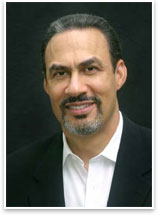 Category 1: Private-sector architects who have established a portfolio of accomplishment in the design of architecturally distinguished public facilities Category 1: Private-sector architects who have established a portfolio of accomplishment in the design of architecturally distinguished public facilities
Philip Freelon, FAIA, founder of the Freelon Group in Durham, N.C., is a native of Philadelphia. He graduated from North Carolina State University's College of Design with a bachelor of environmental design (architecture) and top design honors, and then earned his master of architecture degree from MIT. In 1989, Freelon was the recipient of the Loeb Fellowship and spent a year of independent study at the Harvard University Graduate School of Design. Freelon currently serves as a visiting lecturer at MIT in the School of Architecture and Planning. He is one of 22 LEED® accredited professionals in his firm. He is currently serving as a peer professional in the GSA’s Design Excellence Program and has served on the National Endowment for the Arts Design Stewardship Panel. Freelon also has served on numerous design award juries, including the National AIA Institute Honor Awards for Architecture.
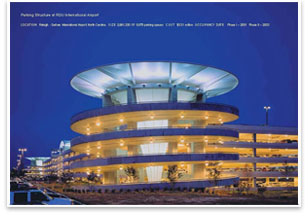 Founded in 1990, The Freelon Group has grown to 65 total staff members, including 21 licensed architects. Focusing on college/university, transportation/aviation, and museum/cultural center projects, Freelon’s firm has successfully delivered award-winning building design within a collaborative and innovative studio environment and has won dozens of regional and local design awards. The firm has completed major museum projects in Baltimore and San Francisco and recently was selected—with partner Davis Brody Bond—by the Smithsonian Institution to lead the planning team for the new National Museum of African American History and Culture to be located on the National Mall in Washington, D.C. University clients include the University of North Carolina, Duke University, Yale University, and Morgan State University. Founded in 1990, The Freelon Group has grown to 65 total staff members, including 21 licensed architects. Focusing on college/university, transportation/aviation, and museum/cultural center projects, Freelon’s firm has successfully delivered award-winning building design within a collaborative and innovative studio environment and has won dozens of regional and local design awards. The firm has completed major museum projects in Baltimore and San Francisco and recently was selected—with partner Davis Brody Bond—by the Smithsonian Institution to lead the planning team for the new National Museum of African American History and Culture to be located on the National Mall in Washington, D.C. University clients include the University of North Carolina, Duke University, Yale University, and Morgan State University.
His public work is exceptionally beautiful and is demonstrative of his success. “Public projects normally considered mundane, such as the Solid Waste Corporate Facility, become incredible pieces of public architecture,” the jury notes. “Creating outstanding architecture within the limitations imposed by public sector bureaucracies and budget constraints is an incredible challenge of which Mr. Freelon has proven himself to be a true master.”
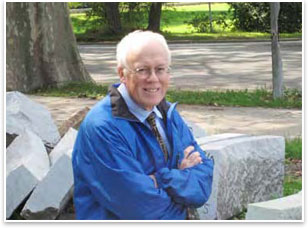 Category 2: Public-sector architects who manage or produce quality design within their agencies Category 2: Public-sector architects who manage or produce quality design within their agencies
Roger Boothe, FAIA, has served as the director of urban design in Cambridge, Mass., in the city’s planning department since 1979. For the last 30 years, according to his nominators, the Boston Society of Architects, he “has exemplified the kind of public service that this award is intended to honor. “ With a strong vision for livability, Boothe has crafted citywide plans and created urban design guidelines that have guided a major transformation of Cambridge. In the process, he has collaborated with more than 100 architecture firms from across the country and around the world to develop more than 20 million square feet within the city.
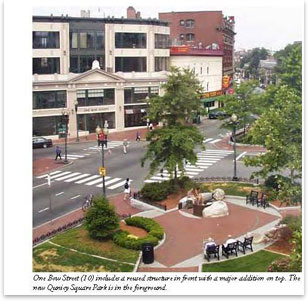 Boothe earned a BA and a BArch with honors from the University of Arkansas School of Architect and a master of city planning in urban design from the Harvard Graduate School of Design. In his varying roles as designer, critic, facilitator, and advisor, Booth has been responsible for envisioning and implementing a citywide plan. He has developed plans and guidelines that include four major project areas: Harvard Square, Central Square, Cambridgeport/MIT, and the East Cambridge Waterfront. His work also embodies public space design including transit, public ways, and public facilities, such as the city’s water works and library. He also has managed the design reviews on more than 100 projects for his fellow Cantebridgians. Boothe earned a BA and a BArch with honors from the University of Arkansas School of Architect and a master of city planning in urban design from the Harvard Graduate School of Design. In his varying roles as designer, critic, facilitator, and advisor, Booth has been responsible for envisioning and implementing a citywide plan. He has developed plans and guidelines that include four major project areas: Harvard Square, Central Square, Cambridgeport/MIT, and the East Cambridge Waterfront. His work also embodies public space design including transit, public ways, and public facilities, such as the city’s water works and library. He also has managed the design reviews on more than 100 projects for his fellow Cantebridgians.
The jury was impressed particularly with the incredible depth and persistence in Mr. Boothe’s commitment to his community’s long-term growth. “His accomplishments during his tenure in Cambridge have created a truly magnificent urban fabric that is enlightened in its vision and is fabulously rich in content,” they said.
 Category 3: Public officials or other individuals who by their role of advocacy have furthered the public’s awareness and/or appreciation of design excellence. Category 3: Public officials or other individuals who by their role of advocacy have furthered the public’s awareness and/or appreciation of design excellence.
Donald Stastny, FAIA, founder and CEO of Portland’s StastnyBrun Architects, Inc., has been a practicing architect, urban designer, and process innovator for more than 40 years. Using design as a comprehensive and strategic tool, he works toward elevating the public’s understanding and expectations of architecture locally, nationally, and internationally. Stastny has undertaken a range of projects including the planning of neighborhoods, cities, and regions and the design of museums, multi-family housing, office buildings, historic renovations, and cultural centers. He has developed and designed more than 50 national and international processes for competitions, commissions, and plans, many of which have become national models. He is a masterful facilitator as well, having worked with international and national groups of all types and sizes to establish common ground and achieve diverse goals.
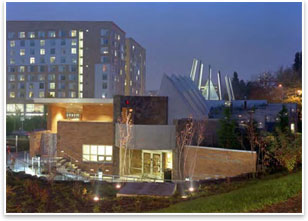 An award-winning architect and planner, Stastny has been honored with fellowship in the AIA, the American Institute of Certified Planners, and the Institute of Urban Design. Additionally, he is a member of the Canadian Institute of Planners. Stastny received his BS in business administration from Oregon State University, a BArch from the University of Washington, and an MArch and MCP at the University of Pennsylvania and continued his post-graduate studies as a research fellow at the Center of Ekistics in Athens, Greece. He co-founded his professional firm in 1975, which has been in continuous operation for more than 30 years. He also contributes to the advancement of design through higher education: In collaboration with Clark Llewellyn, AIA, and Charles Gordon, AIA, he founded the Oregon School of Design, a unique architectural/planning laboratory that brought formal architecture education to Portland. Stastny has been a guest lecturer at colleges and universities throughout the nation and currently serves as an Adjunct Professor at Portland State University’s College of Urban Affairs. An award-winning architect and planner, Stastny has been honored with fellowship in the AIA, the American Institute of Certified Planners, and the Institute of Urban Design. Additionally, he is a member of the Canadian Institute of Planners. Stastny received his BS in business administration from Oregon State University, a BArch from the University of Washington, and an MArch and MCP at the University of Pennsylvania and continued his post-graduate studies as a research fellow at the Center of Ekistics in Athens, Greece. He co-founded his professional firm in 1975, which has been in continuous operation for more than 30 years. He also contributes to the advancement of design through higher education: In collaboration with Clark Llewellyn, AIA, and Charles Gordon, AIA, he founded the Oregon School of Design, a unique architectural/planning laboratory that brought formal architecture education to Portland. Stastny has been a guest lecturer at colleges and universities throughout the nation and currently serves as an Adjunct Professor at Portland State University’s College of Urban Affairs.
“Mr. Stastny’s efforts to continually elevate the nature of design competitions has become the model by which the standards of all contemporary competition should be judged,” the jury noted. “In a venue that can easily be abused, Donald has constantly promoted a process that seeks out the best from the design community.” |



